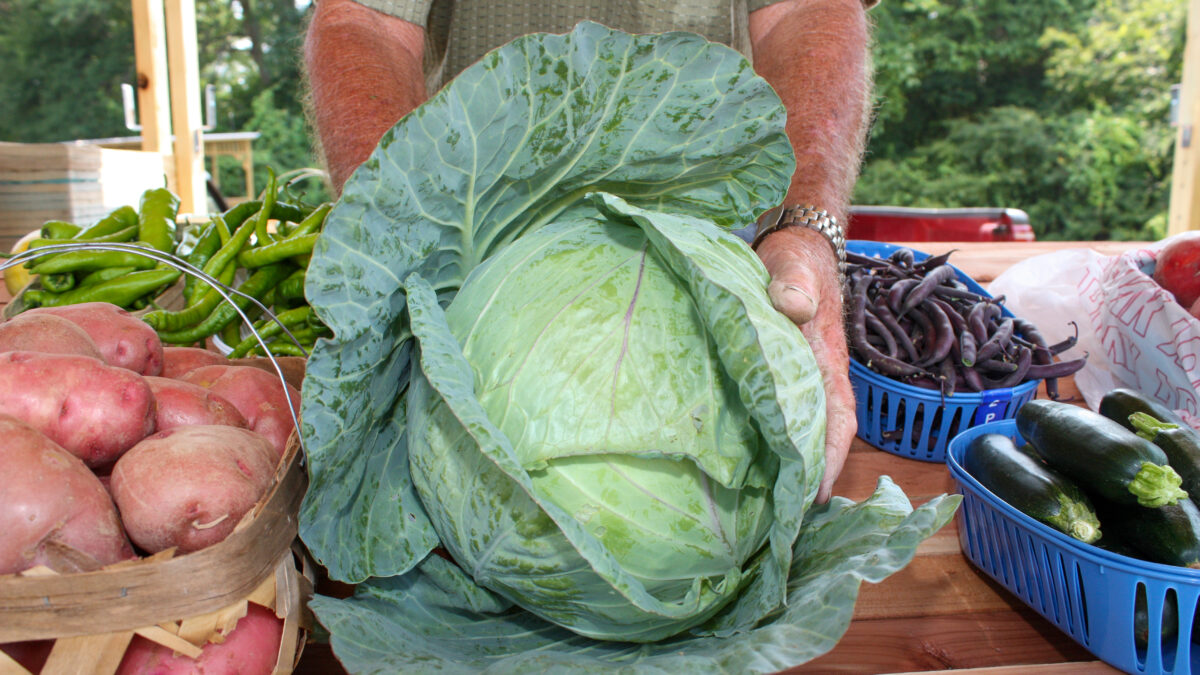Eliminating 'Food Deserts ' Only a Small Step Toward Healthier Habits
Guest Author
Special Contributor to FB.org

photo credit: Alabama Farmers Federation, Used with Permission
Guest Author
Special Contributor to FB.org
Download a 60-second audio version of this column at Giblin Focus.
With 37,716 supermarkets to choose from in the U.S., shopping for groceries is a breeze for most consumers. They can pick up a gallon of milk at the convenience store; do the weekly shopping at their favorite nearby supermarket; stock up at a big box discount store; or treat themselves to visual and culinary delights at an upscale, gourmet market.
Yet in a country with the most productive, diverse agricultural production in the world and a grocery industry that generates $638 billion in annual sales, some 23.5 million Americans not only don 't have those choices, they have little or no access at all. They live in "food deserts"—communities without ready access to fresh, healthy, affordable foods. Instead, their only options—if any—are fast food outlets or convenience stores.
USDA defines a food desert as a low-income community where the nearest supermarket is at least one mile from a populated zone. Many inner-city residents don 't have cars or access to reliable public transportation. In rural areas where vehicle ownership is higher and the population is more widespread, food deserts are low-income areas more than 10 miles from a supermarket. Food deserts are in every state: They can be within a major urban area, but more than 98 percent are in rural areas, especially in the South and West.
The reasons for food deserts are many, but the bottom line is economics. Supermarkets need to make money to stay in business. While consumers with good access to supermarkets may gasp when looking at the final bill at the checkout counter, the average grocery store generates only 1.5 percent profit after taxes and operating costs. Those thin margins can quickly erode to severe losses when trying to serve thinly-populated and distant rural areas, or inner-city areas with high costs for real estate, logistical challenges and crime.
Federal, state, local and private initiatives are underway to try to eliminate food deserts. USDA is working with the Treasury Department and the Department of Health and Human Services on the Healthy Food Financing Initiative. Launched in 2010, the initiative is trying to attract private investment through tax credits, low-interest loans, loan guarantees and grants. Major supermarket chains have committed to invest in under-served areas. Several foundations have pledged and donated hundreds of millions of dollars. States and cities have also followed through with local incentives.
Projects range from construction and expansion of supermarkets to small-scale programs, such as city gardens, refrigeration units for fresh products in convenience stores, mobile mini-markets and weekly farmers ' markets.
While lack of access to healthy foods can result in poor diets and increased health risks, studies have also shown that simply opening a grocery store in a poor area isn 't a quick fix to change food choices. Those living in food deserts tend to be older, lower income and less-educated than those who live in areas with greater access—all factors shown to correlate with diet and health.
Fair pricing is also critical. Studies have shown that low-cost, highly processed foods lead to a higher prevalence of obesity. Fresh foods tend to cost more and require more preparation, which means there is a continuing need for education to teach the skills needed for buying and cooking healthy food. In-store marketing and promotion can also play a part in influencing healthy choices.
American farmers can help by continuing to do what they do best—producing the highest-quality foods, efficiently and economically. Farmers and their families are active members of the communities they live and work in, and they play an important role—along with other businesses in their communities—to help foster thriving rural economies that will be attractive to grocers. Where possible, farmers who sell in local markets can offer great products, at fair prices, along with advice and demonstrations on how to prepare them. They can also help lead efforts to open farmers ' markets where other options may not exist.
For consumers who have long been without healthful, affordable choices, building new habits may be a challenge. Education and promotion can help create the desire and demand, but a motivated consumer can 't act on it without access.
Robert Giblin writes, speaks and consults about agricultural and food industry issues, policies and trends.
Trending Topics
VIEW ALL